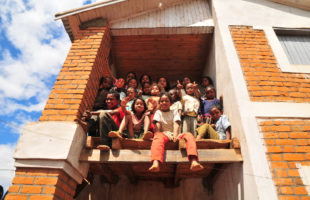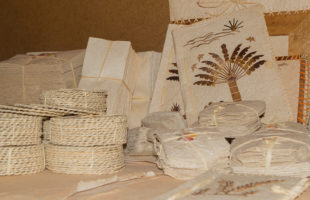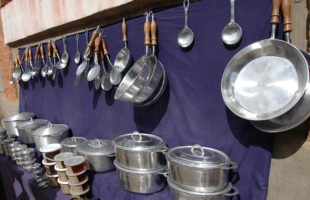As a traveller in Madagascar, you will hear about fadys sooner or later. Fady is the Malagasy word for taboo and probably derives from the Indonesian “pady”. But taboo is not the only meaning of this word, it is also used to call something sacred. Fadys are rules that concern situations as well as people, animals, locations or a certain …
LesenSchlagwort-Archiv: culture Madagascar
Pirates’ cemetery St. Pierre
Legend tells that there was the famous pirates‘ republic of Libertalia at Madagascar’s eastcoast in 17th and 18th century, more precise at Nosy Boraha (St. Marie). Fallen over and skew, century old tombstones at the forlorn cemetery St. Pierre, near the biggest city oft he island, Ambodifotatra, bear witness at least to an adventurous time at the Malagasy island. Famous …
LesenPousse-Pousse
If you want to travel in Madagascan cities without a motor, it’s best to take a Pousse-Pousse. These are rickshaws made of colourfully painted wood, which are either pulled by a man on foot or on a bicycle (Cyclo-Pousse). In Malagasy, the vehicle’s name is posy posy, but this is only the Madagascan spelling of the French word. Translated, it …
LesenAntemoro paper
Actually, the Antemoro ethnic group lives in southeast Madagascar, around Manakara and Farafangana. In the southern highlands, however, there is a small factory in the middle of Ambalavao, which still shows the production of the handmade paper called Antaimoro, which was once typical of the traditional Antemoro and still is today. Originally the Antemoro came from Arabs, who brought the …
LesenFort Manda
The ruin of Fort Manda is about three kilometres northeast of the coastal town of Mahavelona (Foulpointe) and can be easily reached by foot from there. Directly from the end of the town it is only half as far. A visit should take at least half a day, the entrance fee is about 3000 Ariary. Fidel, the guide and guardian …
LesenAtelier “The six brothers”
The zebu is Madagascar’s most common kept animal, and shapes the country today strongly. Whether on the road, in the middle of the city, on rice fields or in the smallest hut villages – everywhere you will find cattle with the typical hump. They provide many Madagascans with a small income, offer meat and – admittedly relatively little – give …
LesenThe seal
Madagascar’s current seal was designed in 1993 and has been in use in this form throughout. It shows the outlines of the country in red color within a white circle, below is a stylized zebu head on an equally stylized rice field. The silhouette of the country is framed by the leaves of the travellers’ tree. The zebu and the …
LesenFamadihana – Turning the deads
That Madagascar is always good for a surprise was already clear to me on my first trip in 1995. But this trip should be a little different. With our guests, we were on our way to the south of Madagascar, and at our stopover in Antsirabe, 170 kilometers from the capital, we settled down in a cozy hotel. Actually we …
LesenAluminium foundries of Ambatolampy
If you take the RN7 from Antananarivo towards Antsirabe, you will reach the small town of Ambatolampy after about 80 km and almost two hours. The name means “city of rocks”. The city belongs to the Vakinankaratra region. With all surrounding hut villages Ambatolampy has estimated over 25,000 inhabitants. They live mainly from rice cultivation, but now also grow vegetables …
LesenThe animal that brings death
No other animal in Madagascar has as many myths and fairy tales as the Aye-Aye (Daubentonia madagascariensis). Throughout the northern half of Madagascar, it is fady, which means taboo. Unfortunately, this fady does not mean that the animals are not touched by Madagascans, as with chameleons, for example. Instead, many inhabitants of Madagascar believe that the encounter with an aye-aye …
Lesen MADAMAGAZINE Your Magazine about Madagascar
MADAMAGAZINE Your Magazine about Madagascar










